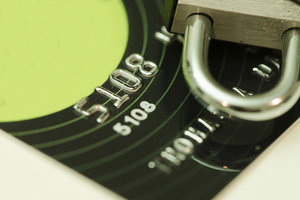Hackers can steal your passwords just by monitoring SmartPhone sensors
 Do you know how many kinds of sensors your smartphone has inbuilt? And what data they gather about your physical and digital activities? An average smartphone these days is packed with a wide array of sensors such as GPS, Camera, microphone, accelerometer, magnetometer, proximity, gyroscope, pedometer, and NFC, to name a few.
Do you know how many kinds of sensors your smartphone has inbuilt? And what data they gather about your physical and digital activities? An average smartphone these days is packed with a wide array of sensors such as GPS, Camera, microphone, accelerometer, magnetometer, proximity, gyroscope, pedometer, and NFC, to name a few.
Now hackers can potentially guess PINs and passwords – that you enter either on a bank website, app, your lock screen – to a surprising degree of accuracy by monitoring your phone's sensors, like the angle and motion of your phone while you are typing.
Read moreSmartwatches can be used to spy on your card's PIN code
 French student and software engineer, Tony Beltramelli, has published his master thesis called Deep-Spying: Spying using Smartwatch and Deep Learning, in which he presents a new attack method that allows attackers to extract sensitive information from motion sensors in wearable devices.
French student and software engineer, Tony Beltramelli, has published his master thesis called Deep-Spying: Spying using Smartwatch and Deep Learning, in which he presents a new attack method that allows attackers to extract sensitive information from motion sensors in wearable devices.
Mr. Beltramelli's research, while at the University of Copenhagen, Denmark, expanded on previous work done by Romit Roy Choudhury, Associate Professor at ECE Illinois, who showed how wearable devices (a Samsung Gear Live smartwatch) can be used to log keystrokes on a keyboard.
Read moreHow to avoid disaster in the event of credit card theft
 When it comes to choosing PINs for your credit card and cellphone you’ve done everything right – you avoided the temptation to use the year you were born in for either and both have different codes.
When it comes to choosing PINs for your credit card and cellphone you’ve done everything right – you avoided the temptation to use the year you were born in for either and both have different codes.
However, these precautions could all be for nothing if a cybercriminal gets in the way of your credit card and the sales point. The standard verification process for payments by debit or credit cards consists of a card with an integrated chip and a PIN. However, a group of investigators have just published a report which explains how a group of attackers found a way around this system and managed to steal €600,000 in stolen cards.
Read moreConsumers tend to be careless while carrying out online transactions
 Data released from a consumer security risks survey found that nearly a third of participants are casual when making online transactions. This action leads to security vulnerability of financial data at risk and poses problems for banks and e-payment systems if they have to refund their clients’ losses.
Data released from a consumer security risks survey found that nearly a third of participants are casual when making online transactions. This action leads to security vulnerability of financial data at risk and poses problems for banks and e-payment systems if they have to refund their clients’ losses.
The study was conducted through an online survey from May to June this year with users from 23 countries. Though users are worried about cyber threats, they still do little to protect themselves. Shocking data shows that children are the most vulnerable Internet users, which poses as a danger for parents.
Read moreCaution: Invisible skimmers are at ATMs
 Banks in Europe are warning about the emergence of a rare, virtually invisible form of ATM skimmer involving a so-called “wiretapping” device that is inserted through a tiny hole cut in the cash machine’s front. The hole is covered up by a fake decal, and the thieves then use custom-made equipment.
Banks in Europe are warning about the emergence of a rare, virtually invisible form of ATM skimmer involving a so-called “wiretapping” device that is inserted through a tiny hole cut in the cash machine’s front. The hole is covered up by a fake decal, and the thieves then use custom-made equipment.
A nonprofit that represents banks in many countries, financial institutions in two countries recently reported ATM attacks in which the card data was compromised internally by “wire-tapping” or “eavesdropping” on the customer transaction. The image below shows some criminal equipment used to perpetrate these eavesdropping attacks.
Read more New secured zone of Google Play: secure messenger SafeUM for Android. Download, Install, Communicate
New secured zone of Google Play: secure messenger SafeUM for Android. Download, Install, Communicate
Axarhöfði 14,
110 Reykjavik, Iceland














